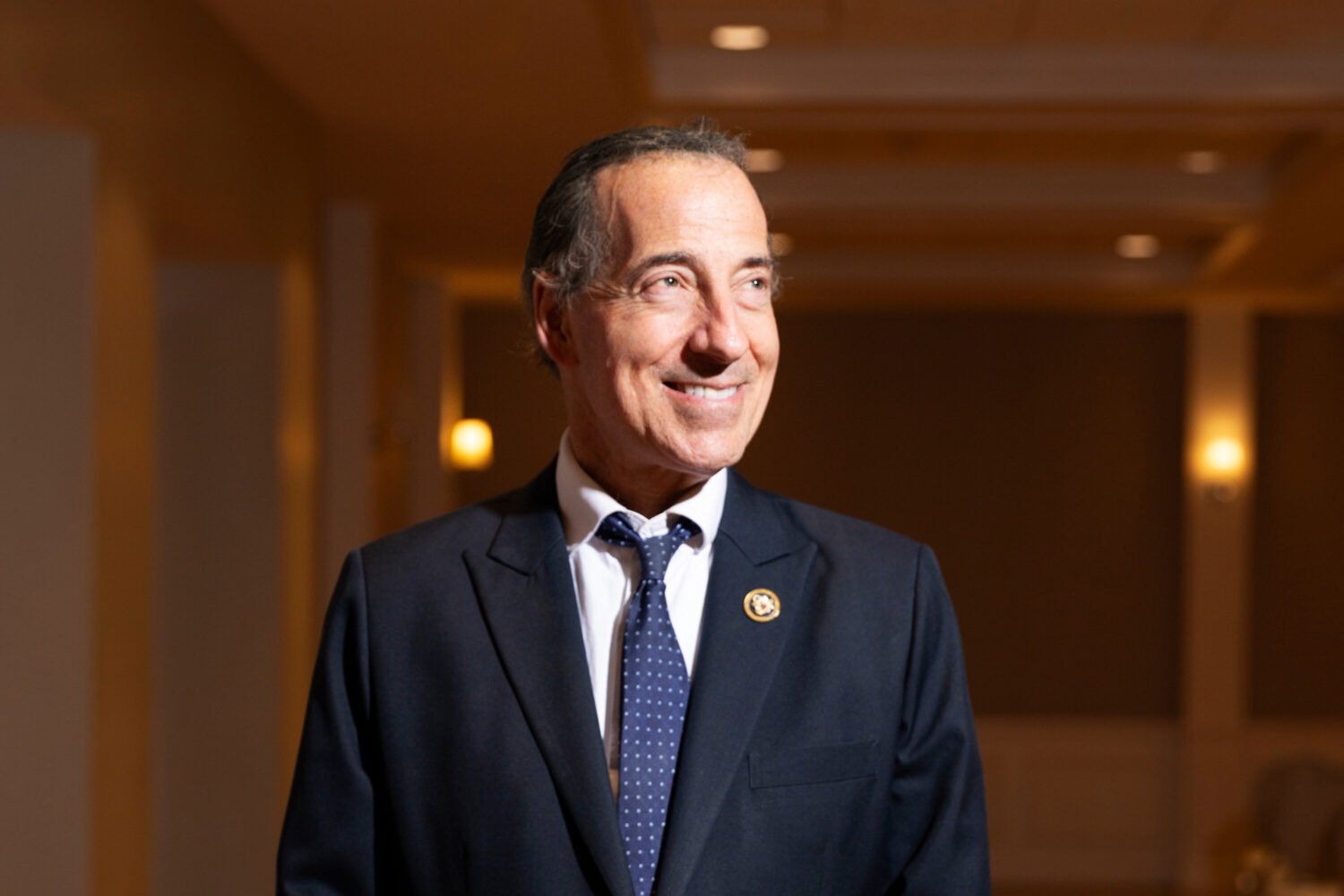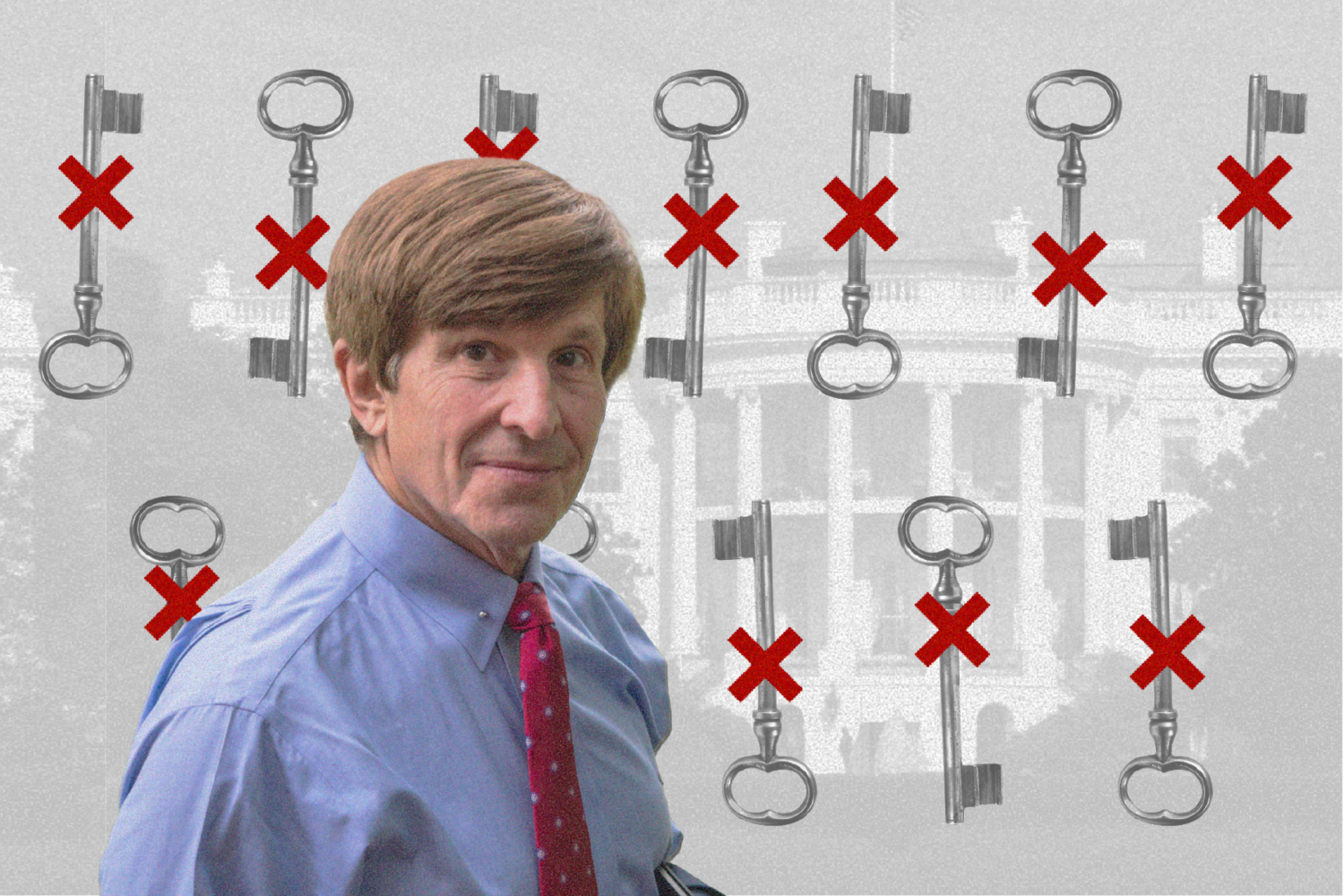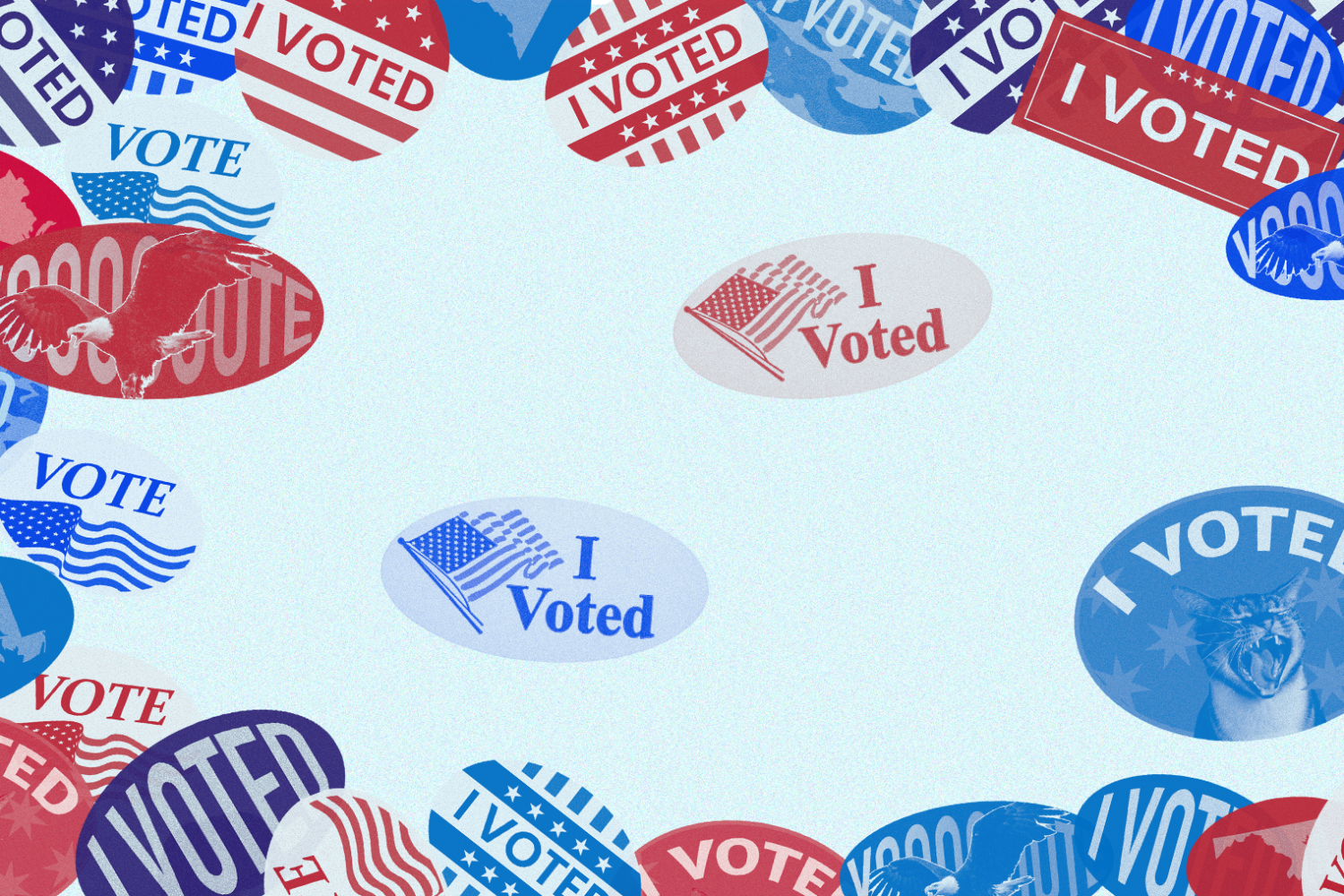Contents
In late 2007, Oprah had endorsed the presidential candidate and was joining him on the stump. But thanks to her enormous popularity, the 18,000 tickets his campaign made available for a rally in South Carolina had been snapped up in just two days.
To accommodate a bigger crowd, organizers moved the event to the University of South Carolina’s football stadium. This created a logistical dilemma. Traditionally, staffers would be stationed at the gates, scribbling attendees’ contact information on paper in order to bring them into the campaign. In this case, however, Obama’s team needed to funnel nearly 30,000 people into the building quickly—the better to start and end on time so the duo could travel to a same-day rally in New Hampshire.
Back then, Scott Goodstein was a member of Obama’s digital operation. “Just not physically possible,” he recalls thinking about collecting contact info. And then: “What if we just don’t have clipboards?”
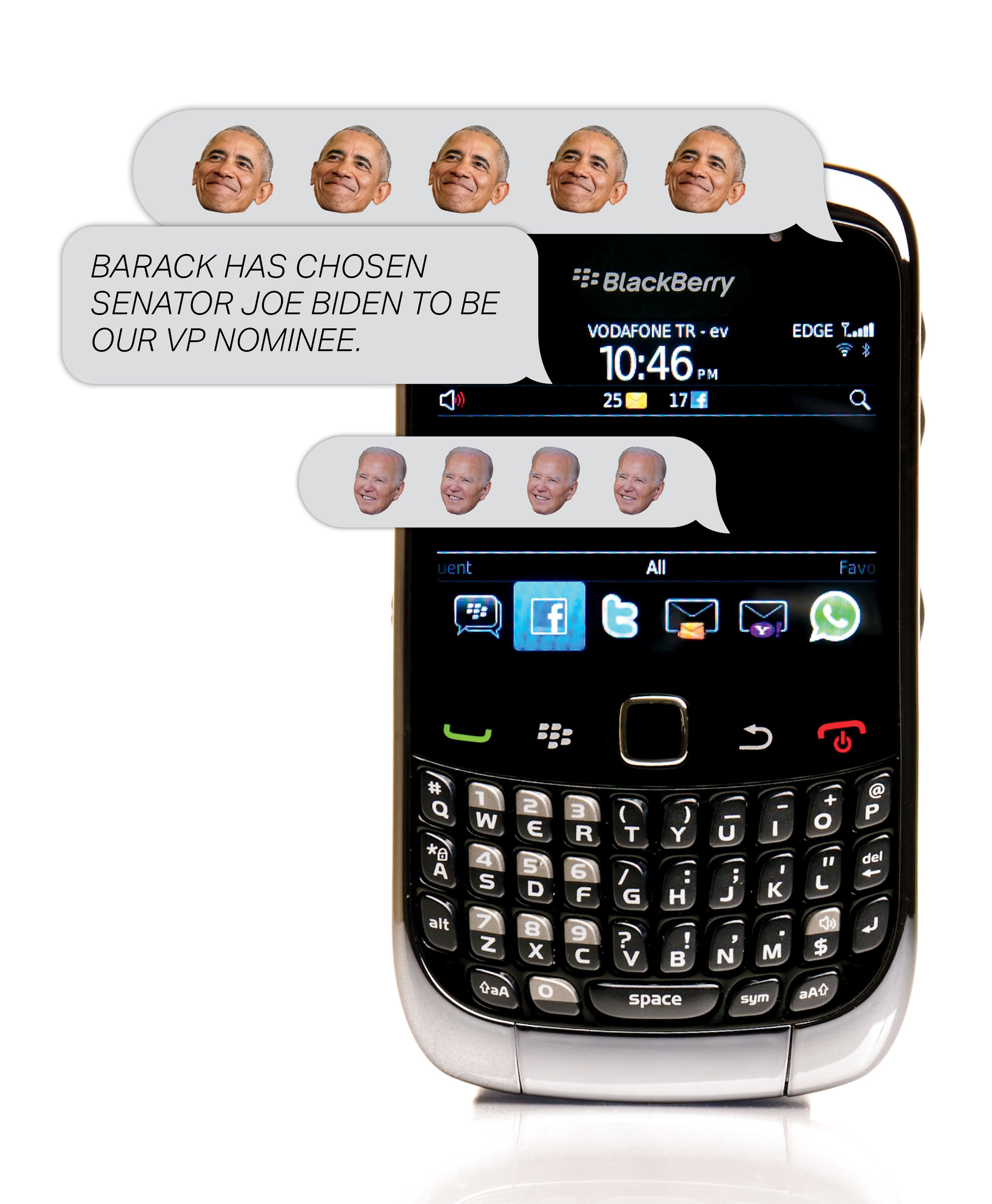
Throughout the primaries, Goodstein had been experimenting with a new tool in the political world: mass-scale texting. He’d used messaging to collect reports of voter intimidation during Nevada’s Democratic caucus, run “Backstage with Barack” contests via text, and given bumper stickers away to anyone who would hand over their phone number. For the event with Oprah, Goodstein and others arranged for rally-goers to be exhorted from the stage to take out their phones and text 62262—“OBAMA” on their keypads—before holding up their phones to prove it.
Then fringey in the political world, Goodstein’s work was successful enough that when Obama’s tight-lipped campaign later announced his vice-presidential pick, it did so via text. Sent in the wee hours of a Friday in August 2008 and crafted to fit within the 160-character constraints of an SMS message—“Barack has chosen Senator Joe Biden to be our VP nominee. Watch the first Obama-Biden rally live,” it began—the notice went out to 2.9 million people. Political texting had arrived. Power to the people, via their pockets.
“Some of it was a little bit shticky,” Goodstein says. But “when you saw people holding up their phones in South Carolina, it meant something.”
Some 16 years and four presidential elections later, Goodstein has second thoughts: “I actually tear up knowing how shitty text-messaging has gotten.”
The Ping of Doom
“You hear the ping,” says Michael Wagner, a professor of journalism and mass communications at the University of Wisconsin, “and so you look down at your phone because it might be your kids. It might be work. It might be from a family member or a friend.”
Or it might be Florida Republican Marco Rubio asking you to donate, right now, to defend his Senate seat from the Dems already pouring MILLIONS into the state. It might be California Democrat Nancy Pelosi, COUNTING ON YOUR HELP TO DEFEAT HOUSE REPUBLICANS. It might be word that Barbra Streisand is, in fact, 100% Team Kamala Harris! 700% MATCH now!! It might be a reminder from Donald Trump that EVERY CENT of Kamala’s $231 million war chest is DIRTY LIBERAL CASH! (followed by a donation link for the GOP presidential nominee).
If you have a smartphone and a heartbeat, you probably recognize these sorts of texts: often unwanted, increasingly insistent if not borderline unhinged, and almost always angling for cash. Sent by campaigns and advocacy groups, they have in recent years descended upon our phones like a ravenous swarm of digital locusts, overrunning our notifications and devouring our touchscreens. Forget the hope of the early Obama campaign, the promise of democracy in the palm of your hand. Today we are living in the Great American Political Textpocalypse, a perpetually pinging nightmare of inescapable irritation. According to one estimate, Americans received 15 billion political texts in the midterm year of 2022, an average of 50 messages for every phone in the country. Alex Quilici, CEO of the spam-blocking company YouMail, says there were already more political texts by July of this year—well before the heart of election season—than in all of 2023, and that by early October as much as half of all automated texts being sent were political.
“IT’S GETTING TO THE POINT WHERE MY MUSCLE MEMORY WITH REPLYING TO POLITICAL TEXTS IS SUCH THAT I CAN’T GUARANTEE MY FRIENDS WON’T GET A TEXT TELLING THEM ‘STOP.’ ”
For text senders, this deluge has been immensely lucrative. ActBlue, the left’s main digital fundraising platform, estimates that up to 90 percent of contributions during big political moments come via mobile devices—Harris’s acceptance of the Democratic presidential nomination saw her rake in roughly $7 million of online donations in a single hour. “Text is starting to become just as critical as email,” says Krishna Ghodiwala, partner and texting specialist at the left-of-center consultancy Message Digital.
For the rest of us, it’s often just incredibly annoying. From 2005 to 2007, Patrick Ruffini was head of the Republican National Committee’s digital operation. Now a pollster, he posted on X in early September: “It’s getting to the point where my muscle memory with replying to political texts is such that I can’t guarantee my friends won’t get a text telling them ‘stop.’ ” Asked what broke him, Ruffini says, “I felt like I was getting 40 or 50 of them a day,” with no real way to escape. “It’s a game of Whac-a-Mole.”
How did we get here? In some ways, the answer is a simple story about the power of money in American politics. How do we make it stop? That’s more complicated.
Back to Top
“A Thing That Every Single Campaign Does”
In the beginning, there was the knock on your door or the campaign flier in your mailbox: exhorting you to vote for Team Red or Blue, begging you for cash, perhaps smearing the other side. And it was annoying. Next came phone calls (muy annoying), followed by emails (tremendamente annoying).
While these traditional outreach methods continue to be popular, they’ve also become victims of their own success. These days, knocks go unanswered while unread fliers get tossed in the trash alongside other junk mail. Spam blockers filter digital appeals away from our inboxes. Answering calls from unknown numbers—helpfully labeled POTENTIAL SPAM—has gone the way of hitchhiking and riding a bike without a helmet. Come the post-Obama years, says one early innovator in the political-texting space, “Phone calls weren’t working because no one was picking up their phones.”
Texting is different. According to the research firm eMarketer, 97 percent of all text messages get opened within 15 minutes. Potential voters, especially younger ones, are more likely to engage with them than with other forms of communication. Campaigns and digital-outreach companies say that the return on investment for sending texts—in the form of recipients taking action by, say, attending an event or calling their legislator—is far greater than it is for phone calls.
Wagner, the Wisconsin professor, says texting creates more urgency than other types of political communication. While we tend to triage emails—often deciding to act on them later, if at all—texts lead us to think, “ ‘I’m going to have to do something with this right now,’ ” he says. “You want to give money to Harris? Yes, I do! You want to stop Harris from taking the White House? Yes, I do! It’s pushing the impulsivity of phone behavior to politics.”
That’s not the only reason campaigns have embraced texting. Political messages sent via print, radio, or television are required by law to disclose their sources. Text messages are not. Phone-banking can cost in the range of three to eight cents a minute, a political postcard about a quarter, and a glossy full-color mailer about a buck-fifty. Simple texts cost around a penny to send—a nickel if you add a photo. Senders of automated bulk texts, like the kind you get from your pharmacy, can be fined by the federal government for unsolicited messages, and telecom carriers can refuse to distribute them. By contrast, senders of the “peer-to-peer” texts preferred by campaigns—those sent to your specific number by an actual human—face few restrictions.
“LIKE PROFESSIONAL FOOTBALL, CAMPAIGN POLITICS IS “A COPYCAT LEAGUE. ONCE SOMETHING WORKS, EVERYBODY WANTS TO KEEP DOING IT OVER AND OVER AND OVER.”
After Obama’s early success with text-messaging, his 2012 reelection campaign leaned into it as a fundraising tool. Others took notice. In 2016, Bernie Sanders used peer-to-peer messages to organize volunteers, while Hillary Clinton and Trump both used texts to solicit donations and turn out voters. Some campaigns began experimenting with using texts to fish for supporters, reaching out to whatever numbers they could get their hands on. When the pandemic upended the 2020 election—preventing canvassers from going door to door and volunteers from gathering in phone banks—campaigns turned even more eagerly to texts.
Two federal rulings helped political texting along. In 2020, the Federal Communications Commission, under pressure from the peer-to-peer industry’s free-speech argument, decreed that as long as a human—not a machine—clicks “send” on a text, there’s no need for the recipient to have opted in. The next year, the Supreme Court went further, deciding that Congress hadn’t intended for a human to be strictly necessary: As long as senders weren’t using mechanically blasted-out texts randomly, the rules governing bulk texts didn’t apply. Today candidates and their consultants can fire away texts with relative impunity.
Since the pandemic, says Thomas Peters, CEO of the right-of-center messaging platform RumbleUp, texting-for-cash has become “a thing that is not just nice to have [but] a thing that every single campaign does.” His company boasts that one of its clients is a city-council candidate in Bowie, Maryland. For Hustle, RumbleUp’s counterpart on the left, it’s a Delaware state-senate candidate. Even for those who might find texting distasteful, its near ubiquity makes forgoing it risky—after all, there’s a good chance your opponent is using it to raise cash. Wagner says professional politics is a lot like professional football: It’s “a copycat league. Once something works, everybody wants to keep doing it over and over and over.”
Back to Top
Testing My Patience
In September, I signed up to receive texts from Democratic Montana senator Jon Tester, who was locked in a close race with Republican Tim Sheehy that could determine control of the Senate. This was an experiment. I wanted to experience a high-stakes contest through texts. I also thought that Tester—a down-to-earth character known for making light of the fact that he has just seven fingers because of a childhood incident with a meat grinder—might actually send texts worth getting.
Tester’s first one mentioned that he’s “the Senate’s only working dirt farmer.” Intrigued but unfamiliar with the term, I typed back: “What is a dirt farmer?” Your response has been received, came the reply. Maybe I’d gone too off-topic. “What are the candidate’s policy positions on immigration?” I asked. Your response has been received. What about Bitcoin? Same thing. Student-loan debt? Ditto. This wasn’t the two-way political conversation promised by peer-to-peer texting. This wasn’t even asking ChatGPT to explain how the filibuster works. It’s possible to imagine a political world in which texting is primarily used to educate voters, helping them make better, more informed choices at the ballot box. But in our world, I mostly felt like a prospective ATM.
Over the course of a week, I received 37 fundraising texts. One came from Tester surrogate James Carville, warning me that “Ol’ Mitchy Mitch”—as in Senate minority leader Mitch McConnell—“is really hurling attacks” Tester’s way, which meant his fundraising could really “use a boost.” Another text featuring documentarian Ken Burns—“I’ve dedicated my life to telling America’s stories through film . . . [so] I can confidently say our country is at a crossroads”—seemed specifically targeted at me, an East Coast Gen-X writer. By the time I received Tester’s final message—Please: we’re desperately, respectfully asking for your donations—I was both a little worried about Tester and, despite being avowedly nonpartisan, starting to believe maybe he really did need my $5.
That’s no accident. Political texts may seem simple—a few quick sentences, a simple appeal, a CLICK HERE link—but the thinking behind them is sophisticated. Like all good marketing, they’re crafted to appeal to our monkey minds. Odd numbers convey authenticity: If 3,703 Democrats pitch in $27 or more before midnight . . . . Feeling like an insider is catnip: Follow our secure link to view the note Don Jr. wrote just for you . . . . Perceived scarcity can motivate giving: For tonight ONLY . . . . So can fear of the other team: The GOP is on the brink of taking the Senate . . . .
Why does a Trump text ask recipients to ENDORSE ME before the GOP candidate “wipe[s] the floor with Kamala” in the presidential debate? Because political consultants know that a reply is one step along the so-called “ladder of engagement” toward giving cash. Why do so many texts promise plus-size donation matches, up to and even beyond an “INCREDIBLE 900%!!”? Because regular people who might feel embarrassed by being able to give only a few dollars are instead empowered by thinking their donation will mean more. (Ironically, there’s little chance anyone is actually making those mega-matches, because doing so would often push donations above federal campaign-finance limits. The Federal Election Commission neither tracks nor regulates text offers, so there’s no way to really know.)
Mike Nellis, CEO of Authentic, a company that Tester’s campaign works with on its digital fundraising program, says he prefers not to talk about current clients. Others who work in the industry say campaigns are constantly experimenting with their pitches, testing and tweaking to figure out if it’s better to send a text late at night or the next morning (evening texts might get more consideration, while early-in-the-day ones hit when the target is likely in action mode), when to include a photo (pictures help a message stand out in a crowded inbox but cost more to send), and which surrogates, based on their data profiles, are most likely to work on which potential donors (it’s probably not a coincidence that Ken Burns dropped me a line). By using publicly available voter data and matching up records available from third-party data brokers, savvy campaigns already know whether you vote, whether you’ve given money before, and which issues get you the most worked up.
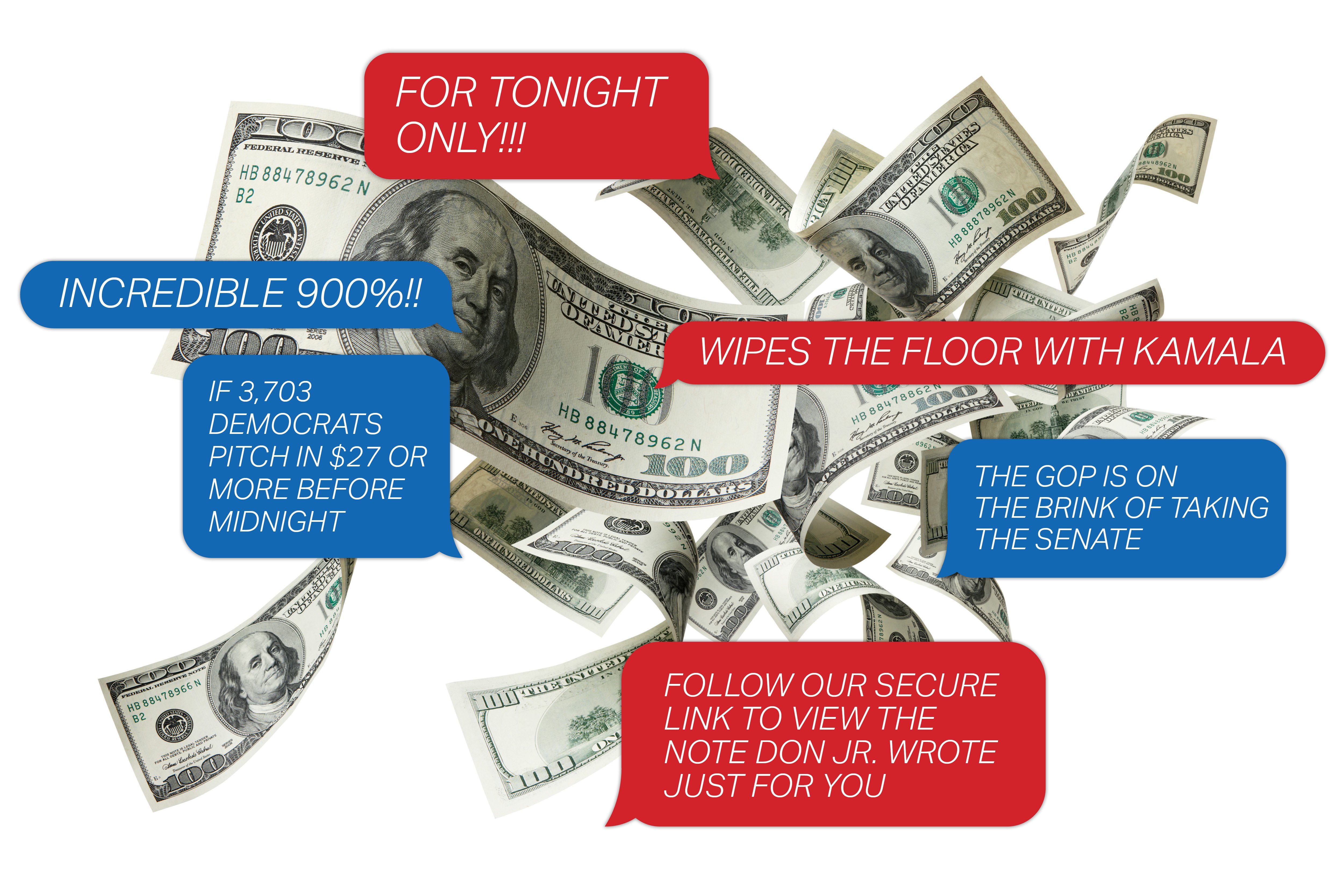
THE SKY-IS FALLING SENTIMENT OF SOME POLITICAL TEXTS IS ROOTED IN THE AMPED-UP EMOTIONS OF THE SENDERS: “TO THE PEOPLE WORKING THE CAMPAIGN, IF ANYTHING, THEY’RE TONING DOWN THE WAY THEY FEEL.”
Speaking of which: While most of us say we want uplifting, positive politics, campaigns know we’re a bit full of it. Truth is, say those in the field, we respond more strongly to negative messaging. That’s why so many texts are doom-coded, and why the Tester campaign sent me messages like “This is really bleak, team,” or, from Carville, “I’m not bullsh***ing you when I say that we are standing on the edge of the precipice right now.” Brian Young, a former Democratic Senate staffer who worked with the subcommittee overseeing the telecommunications industry and now heads the left-leaning messaging platform Action Network, says that the sky-is-falling sentiment of some political texts is rooted less in a desire to manipulate than in the amped-up emotions of the senders: “To the people working the campaign, if anything, they’re toning down the way they feel.”
That’s understandable. The balance of the Senate largely does teeter on Montana. With such high stakes, it’s hard not to feel for Tester’s campaign—and all the others like it, desperately flooding our inboxes.
But sympathy has its limits. On a Saturday ten days into my Tester test, I’m out for a mountain hike in Shenandoah National Park. There’s little cellphone reception, yet, hours in and just below the summit, I hear a ping! Eager to see what my loved ones might have sent, I check my device: “It’s Shelbi, Jon’s campaign manager.” Jon Tester has won—if not reelection, then the battle for my attention.
Back to Top
Can’t Stop, Won’t Stop
Just for the sake of argument, suppose you don’t actually want Tester and Friends asking you to chip in approximately 5.3 times a day. If so, then the best thing to do is not to sign up for texts in the first place. However, if your phone is already blowing up—maybe, in a moment of inspiration or weakness, you gave one candidate somewhere a few dollars—then it’s time to stand athwart political and technological history and yell, “Stop!”
No, really: You can often opt out simply by replying with STOP.

“There’s an understanding that if you haven’t opted out, you’re still okay with receiving those messages,” says Message Digital’s Krishna Ghodiwala. “That’s the cardinal rule: When someone says ‘stop,’ you take them off the list.”
Unfortunately, that doesn’t always work. Some companies engage in what’s known as “snowshoeing”—unsubscribe from one number sending you texts and they’ll simply message you from a different number. A few senders, says RumbleUp’s Peters, will even use stop requests “as a data point: ‘Oh, this is a live phone number,’ ” a signal to keep hitting it with texts.
How do campaigns find you? Voter-registration records are available to the public and often include phone numbers. Consumer data can be purchased from data brokers and matched against voter information. If you’ve made a donation or otherwise shared information with just one candidate, your number might get “washed through” what Peters calls “the whole murky fundraising industrial complex,” sold or shared to other candidates and political-action committees.
Merch is another way in. Candidates today are likely to require a phone number before allowing you to purchase a campaign T-shirt. Jennifer Stromer-Galley, a professor at Syracuse University who researches political texts, says she uses the swag-to-text pipeline to get her name on outreach lists: “I usually try to find the weirdest, quirkiest thing I can. I have an ice scraper from John McCain.” (Even Stromer-Galley has limits. Dropping $75 on Jeb Bush’s 2016 “Guaca Bowle”—“secret guacamole recipe not included”—was, she says, too spendy for research purposes.)
In some cases, political texts have become a tool for fraudsters, who impersonate campaigns and candidates to trick recipients into sharing personal information and clicking on malicious links. Other times, texts serve as vectors of political misinformation, the digital equivalent of physical mailers serving up baseless and lurid smears and claims. In 2022, the New York Times collected texts, shared by readers, falsely purporting that Democrats had organized a petition to impeach Supreme Court justice Amy Coney Barrett and that President Biden was about to send 87,000 IRS agents to “shut down and destroy churches across America.”
Even if the organizations in your inbox aren’t looking to outright deceive you, it can be hard to know who exactly is asking you for cash—or where your money is going. In 2019, California passed a law requiring that political texts include a “paid for by” disclosure, but that’s rare among states. Following the 2020 election, texts and emails from Trump’s team (“The Left will try to STEAL this election!”) solicited donations to help pay for legal challenges to Biden’s victory. Buried in the fine print, Reuters found, was language stating that Trump’s leadership PAC and the Republican National Committee would receive most of the funds collected to use at their discretion, while donors would have to give more than $8,000 before their contributions landed in a designated “recount account.”
Similarly, a cottage industry of text-happy “Scam PACs” has sprung up. Claiming to support the candidates and causes their donors care about, these organizations spend most or all of the money they raise on their own staff and operations—something Action Network’s Brian Young says amounts to a “grift tax,” diverting money from more legit political players.
As for those players—like Tester and his allies—texting you almost a half dozen times a day? Young says he gets less worked up about that. As long as the money’s going to Democrats, he’s good.
Back to Top
No Exit
Is there any relief in sight? Young says the country’s powerful telecoms could refuse service to bad texting actors. The Obama campaign’s Goodstein has pushed the FCC to change its rules by cracking down on popular peer-to-peer texting that touts itself as human but is, he argues, little more than spam. If regulators would simply levy high dollar fines when a sender ignores a “STOP” request, Goodstein adds, “the entire ecosystem changes.” Congress could act, too, tightening federal law to impose the same restrictions on political texts as it does on nonpolitical ones.
Of course, there’s a reason none of that has happened already: The status quo is working just fine for those with the power to change it. Telecoms are understandably nervous about restricting political speech. Many in politics, such as Message Digital’s Ghodiwala, argue that texting remains a boon to democracy, a viable and valuable way to connect with hard-to-reach voters—it should be perfected, sure, but hardly proscribed. As for Congress, there are maybe no 535 people in the country less motivated to limit a major avenue of fundraising—except the campaign consultants also getting a cut. “A lot of campaigns on both the Republican and Democratic sides don’t really care what their vendors are doing,” says RumbleUp CEO Peters, “as long as the money comes in.” For too many, the Great American Political Textpocalypse is simply too good a deal, with seemingly little downside. “If I’m a diehard Republican and I’m being bombarded by the Republican texts,” says Syracuse’s Stromer-Galley, “I’m not going to go and switch parties just because of it.”
What might ultimately rescue our text inboxes? Perhaps texting, like mailers and phone calls and email before it, will become a victim of its own success—so pervasive, so ubiquitous, so in our faces that we learn to ignore it. Earlier this year, I saw a text from Larry Hogan, the former Maryland Republican governor running for the state’s open US Senate seat. “The amount of texts you’re getting today is probably absurd,” his message began. “I don’t want to be adding to the noise . . . .” He then asked for money.
In late 2007, Oprah had endorsed the presidential candidate and was joining him on the stump. But thanks to her enormous popularity, the 18,000 tickets his campaign made available for a rally in South Carolina had been snapped up in just two days.
To accommodate a bigger crowd, organizers moved the event to the University of South Carolina’s football stadium. This created a logistical dilemma. Traditionally, staffers would be stationed at the gates, scribbling attendees’ contact information on paper in order to bring them into the campaign. In this case, however, Obama’s team needed to funnel nearly 30,000 people into the building quickly—the better to start and end on time so the duo could travel to a same-day rally in New Hampshire.
Back then, Scott Goodstein was a member of Obama’s digital operation. “Just not physically possible,” he recalls thinking about collecting contact info. And then: “What if we just don’t have clipboards?”
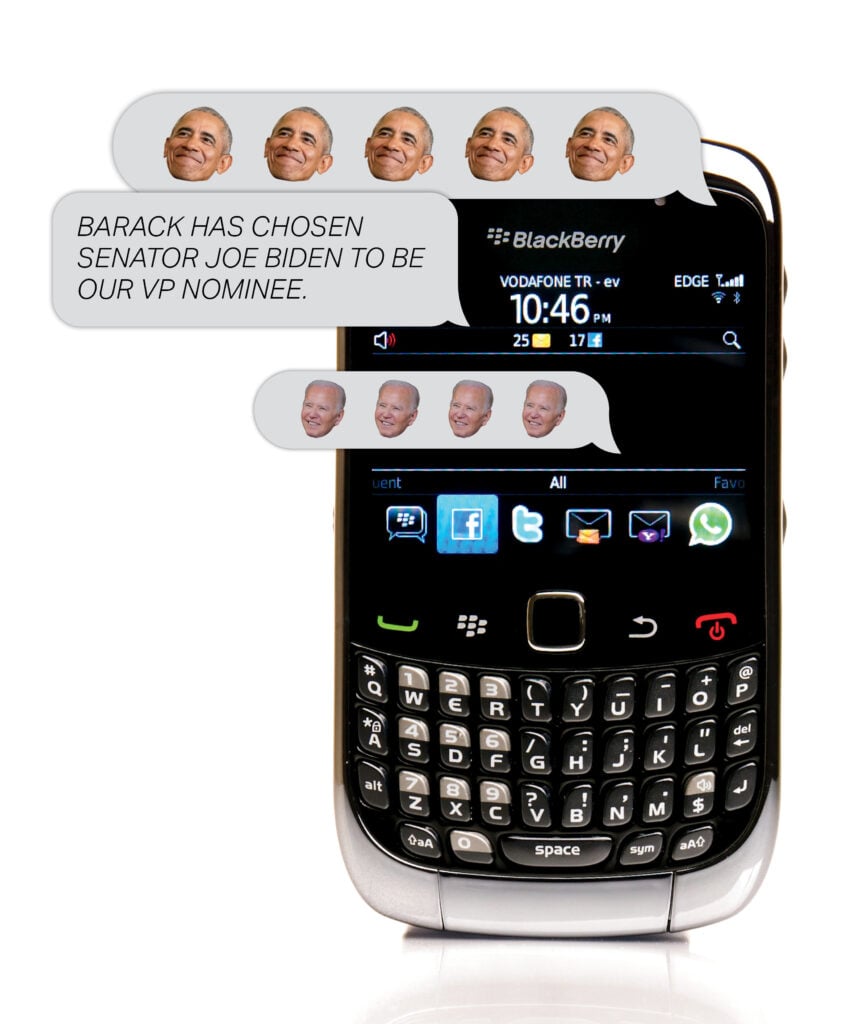
Throughout the primaries, Goodstein had been experimenting with a new tool in the political world: mass-scale texting. He’d used messaging to collect reports of voter intimidation during Nevada’s Democratic caucus, run “Backstage with Barack” contests via text, and given bumper stickers away to anyone who would hand over their phone number. For the event with Oprah, Goodstein and others arranged for rally-goers to be exhorted from the stage to take out their phones and text 62262—“OBAMA” on their keypads—before holding up their phones to prove it.
Then fringey in the political world, Goodstein’s work was successful enough that when Obama’s tight-lipped campaign later announced his vice-presidential pick, it did so via text. Sent in the wee hours of a Friday in August 2008 and crafted to fit within the 160-character constraints of an SMS message—“Barack has chosen Senator Joe Biden to be our VP nominee. Watch the first Obama-Biden rally live,” it began—the notice went out to 2.9 million people. Political texting had arrived. Power to the people, via their pockets.
“Some of it was a little bit shticky,” Goodstein says. But “when you saw people holding up their phones in South Carolina, it meant something.”
Some 16 years and four presidential elections later, Goodstein has second thoughts: “I actually tear up knowing how shitty text-messaging has gotten.”
Back to Top
The Ping of Doom
“You hear the ping,” says Michael Wagner, a professor of journalism and mass communications at the University of Wisconsin, “and so you look down at your phone because it might be your kids. It might be work. It might be from a family member or a friend.”
Or it might be Florida Republican Marco Rubio asking you to donate, right now, to defend his Senate seat from the Dems already pouring MILLIONS into the state. It might be California Democrat Nancy Pelosi, COUNTING ON YOUR HELP TO DEFEAT HOUSE REPUBLICANS. It might be word that Barbra Streisand is, in fact, 100% Team Kamala Harris! 700% MATCH now!! It might be a reminder from Donald Trump that EVERY CENT of Kamala’s $231 million war chest is DIRTY LIBERAL CASH! (followed by a donation link for the GOP presidential nominee).
If you have a smartphone and a heartbeat, you probably recognize these sorts of texts: often unwanted, increasingly insistent if not borderline unhinged, and almost always angling for cash. Sent by campaigns and advocacy groups, they have in recent years descended upon our phones like a ravenous swarm of digital locusts, overrunning our notifications and devouring our touchscreens. Forget the hope of the early Obama campaign, the promise of democracy in the palm of your hand. Today we are living in the Great American Political Textpocalypse, a perpetually pinging nightmare of inescapable irritation. According to one estimate, Americans received 15 billion political texts in the midterm year of 2022, an average of 50 messages for every phone in the country. Alex Quilici, CEO of the spam-blocking company YouMail, says there were already more political texts by July of this year—well before the heart of election season—than in all of 2023, and that by early October as much as half of all automated texts being sent were political.
“IT’S GETTING TO THE POINT WHERE MY MUSCLE MEMORY WITH REPLYING TO POLITICAL TEXTS IS SUCH THAT I CAN’T GUARANTEE MY FRIENDS WON’T GET A TEXT TELLING THEM ‘STOP.’ ”
For text senders, this deluge has been immensely lucrative. ActBlue, the left’s main digital fundraising platform, estimates that up to 90 percent of contributions during big political moments come via mobile devices—Harris’s acceptance of the Democratic presidential nomination saw her rake in roughly $7 million of online donations in a single hour. “Text is starting to become just as critical as email,” says Krishna Ghodiwala, partner and texting specialist at the left-of-center consultancy Message Digital.
For the rest of us, it’s often just incredibly annoying. From 2005 to 2007, Patrick Ruffini was head of the Republican National Committee’s digital operation. Now a pollster, he posted on X in early September: “It’s getting to the point where my muscle memory with replying to political texts is such that I can’t guarantee my friends won’t get a text telling them ‘stop.’ ” Asked what broke him, Ruffini says, “I felt like I was getting 40 or 50 of them a day,” with no real way to escape. “It’s a game of Whac-a-Mole.”
How did we get here? In some ways, the answer is a simple story about the power of money in American politics. How do we make it stop? That’s more complicated.
Back to Top
“A Thing That Every Single Campaign Does”
In the beginning, there was the knock on your door or the campaign flier in your mailbox: exhorting you to vote for Team Red or Blue, begging you for cash, perhaps smearing the other side. And it was annoying. Next came phone calls (muy annoying), followed by emails (tremendamente annoying).
While these traditional outreach methods continue to be popular, they’ve also become victims of their own success. These days, knocks go unanswered while unread fliers get tossed in the trash alongside other junk mail. Spam blockers filter digital appeals away from our inboxes. Answering calls from unknown numbers—helpfully labeled POTENTIAL SPAM—has gone the way of hitchhiking and riding a bike without a helmet. Come the post-Obama years, says one early innovator in the political-texting space, “Phone calls weren’t working because no one was picking up their phones.”
Texting is different. According to the research firm eMarketer, 97 percent of all text messages get opened within 15 minutes. Potential voters, especially younger ones, are more likely to engage with them than with other forms of communication. Campaigns and digital-outreach companies say that the return on investment for sending texts—in the form of recipients taking action by, say, attending an event or calling their legislator—is far greater than it is for phone calls.
Wagner, the Wisconsin professor, says texting creates more urgency than other types of political communication. While we tend to triage emails—often deciding to act on them later, if at all—texts lead us to think, “ ‘I’m going to have to do something with this right now,’ ” he says. “You want to give money to Harris? Yes, I do! You want to stop Harris from taking the White House? Yes, I do! It’s pushing the impulsivity of phone behavior to politics.”
That’s not the only reason campaigns have embraced texting. Political messages sent via print, radio, or television are required by law to disclose their sources. Text messages are not. Phone-banking can cost in the range of three to eight cents a minute, a political postcard about a quarter, and a glossy full-color mailer about a buck-fifty. Simple texts cost around a penny to send—a nickel if you add a photo. Senders of automated bulk texts, like the kind you get from your pharmacy, can be fined by the federal government for unsolicited messages, and telecom carriers can refuse to distribute them. By contrast, senders of the “peer-to-peer” texts preferred by campaigns—those sent to your specific number by an actual human—face few restrictions.
“LIKE PROFESSIONAL FOOTBALL, CAMPAIGN POLITICS IS “A COPYCAT LEAGUE. ONCE SOMETHING WORKS, EVERYBODY WANTS TO KEEP DOING IT OVER AND OVER AND OVER.”
After Obama’s early success with text-messaging, his 2012 reelection campaign leaned into it as a fundraising tool. Others took notice. In 2016, Bernie Sanders used peer-to-peer messages to organize volunteers, while Hillary Clinton and Trump both used texts to solicit donations and turn out voters. Some campaigns began experimenting with using texts to fish for supporters, reaching out to whatever numbers they could get their hands on. When the pandemic upended the 2020 election—preventing canvassers from going door to door and volunteers from gathering in phone banks—campaigns turned even more eagerly to texts.
Two federal rulings helped political texting along. In 2020, the Federal Communications Commission, under pressure from the peer-to-peer industry’s free-speech argument, decreed that as long as a human—not a machine—clicks “send” on a text, there’s no need for the recipient to have opted in. The next year, the Supreme Court went further, deciding that Congress hadn’t intended for a human to be strictly necessary: As long as senders weren’t using mechanically blasted-out texts randomly, the rules governing bulk texts didn’t apply. Today candidates and their consultants can fire away texts with relative impunity.
Since the pandemic, says Thomas Peters, CEO of the right-of-center messaging platform RumbleUp, texting-for-cash has become “a thing that is not just nice to have [but] a thing that every single campaign does.” His company boasts that one of its clients is a city-council candidate in Bowie, Maryland. For Hustle, RumbleUp’s counterpart on the left, it’s a Delaware state-senate candidate. Even for those who might find texting distasteful, its near ubiquity makes forgoing it risky—after all, there’s a good chance your opponent is using it to raise cash. Wagner says professional politics is a lot like professional football: It’s “a copycat league. Once something works, everybody wants to keep doing it over and over and over.”
Back to Top
Testing My Patience
In September, I signed up to receive texts from Democratic Montana senator Jon Tester, who was locked in a close race with Republican Tim Sheehy that could determine control of the Senate. This was an experiment. I wanted to experience a high-stakes contest through texts. I also thought that Tester—a down-to-earth character known for making light of the fact that he has just seven fingers because of a childhood incident with a meat grinder—might actually send texts worth getting.
Tester’s first one mentioned that he’s “the Senate’s only working dirt farmer.” Intrigued but unfamiliar with the term, I typed back: “What is a dirt farmer?” Your response has been received, came the reply. Maybe I’d gone too off-topic. “What are the candidate’s policy positions on immigration?” I asked. Your response has been received. What about Bitcoin? Same thing. Student-loan debt? Ditto. This wasn’t the two-way political conversation promised by peer-to-peer texting. This wasn’t even asking ChatGPT to explain how the filibuster works. It’s possible to imagine a political world in which texting is primarily used to educate voters, helping them make better, more informed choices at the ballot box. But in our world, I mostly felt like a prospective ATM.
Over the course of a week, I received 37 fundraising texts. One came from Tester surrogate James Carville, warning me that “Ol’ Mitchy Mitch”—as in Senate minority leader Mitch McConnell—“is really hurling attacks” Tester’s way, which meant his fundraising could really “use a boost.” Another text featuring documentarian Ken Burns—“I’ve dedicated my life to telling America’s stories through film . . . [so] I can confidently say our country is at a crossroads”—seemed specifically targeted at me, an East Coast Gen-X writer. By the time I received Tester’s final message—Please: we’re desperately, respectfully asking for your donations—I was both a little worried about Tester and, despite being avowedly nonpartisan, starting to believe maybe he really did need my $5.
That’s no accident. Political texts may seem simple—a few quick sentences, a simple appeal, a CLICK HERE link—but the thinking behind them is sophisticated. Like all good marketing, they’re crafted to appeal to our monkey minds. Odd numbers convey authenticity: If 3,703 Democrats pitch in $27 or more before midnight . . . . Feeling like an insider is catnip: Follow our secure link to view the note Don Jr. wrote just for you . . . . Perceived scarcity can motivate giving: For tonight ONLY . . . . So can fear of the other team: The GOP is on the brink of taking the Senate . . . .
Why does a Trump text ask recipients to ENDORSE ME before the GOP candidate “wipe[s] the floor with Kamala” in the presidential debate? Because political consultants know that a reply is one step along the so-called “ladder of engagement” toward giving cash. Why do so many texts promise plus-size donation matches, up to and even beyond an “INCREDIBLE 900%!!”? Because regular people who might feel embarrassed by being able to give only a few dollars are instead empowered by thinking their donation will mean more. (Ironically, there’s little chance anyone is actually making those mega-matches, because doing so would often push donations above federal campaign-finance limits. The Federal Election Commission neither tracks nor regulates text offers, so there’s no way to really know.)
Mike Nellis, CEO of Authentic, a company that Tester’s campaign works with on its digital fundraising program, says he prefers not to talk about current clients. Others who work in the industry say campaigns are constantly experimenting with their pitches, testing and tweaking to figure out if it’s better to send a text late at night or the next morning (evening texts might get more consideration, while early-in-the-day ones hit when the target is likely in action mode), when to include a photo (pictures help a message stand out in a crowded inbox but cost more to send), and which surrogates, based on their data profiles, are most likely to work on which potential donors (it’s probably not a coincidence that Ken Burns dropped me a line). By using publicly available voter data and matching up records available from third-party data brokers, savvy campaigns already know whether you vote, whether you’ve given money before, and which issues get you the most worked up.

THE SKY-IS FALLING SENTIMENT OF SOME POLITICAL TEXTS IS ROOTED IN THE AMPED-UP EMOTIONS OF THE SENDERS: “TO THE PEOPLE WORKING THE CAMPAIGN, IF ANYTHING, THEY’RE TONING DOWN THE WAY THEY FEEL.”
Speaking of which: While most of us say we want uplifting, positive politics, campaigns know we’re a bit full of it. Truth is, say those in the field, we respond more strongly to negative messaging. That’s why so many texts are doom-coded, and why the Tester campaign sent me messages like “This is really bleak, team,” or, from Carville, “I’m not bullsh***ing you when I say that we are standing on the edge of the precipice right now.” Brian Young, a former Democratic Senate staffer who worked with the subcommittee overseeing the telecommunications industry and now heads the left-leaning messaging platform Action Network, says that the sky-is-falling sentiment of some political texts is rooted less in a desire to manipulate than in the amped-up emotions of the senders: “To the people working the campaign, if anything, they’re toning down the way they feel.”
That’s understandable. The balance of the Senate largely does teeter on Montana. With such high stakes, it’s hard not to feel for Tester’s campaign—and all the others like it, desperately flooding our inboxes.
But sympathy has its limits. On a Saturday ten days into my Tester test, I’m out for a mountain hike in Shenandoah National Park. There’s little cellphone reception, yet, hours in and just below the summit, I hear a ping! Eager to see what my loved ones might have sent, I check my device: “It’s Shelbi, Jon’s campaign manager.” Jon Tester has won—if not reelection, then the battle for my attention.
Back to Top
Can’t Stop, Won’t Stop
Just for the sake of argument, suppose you don’t actually want Tester and Friends asking you to chip in approximately 5.3 times a day. If so, then the best thing to do is not to sign up for texts in the first place. However, if your phone is already blowing up—maybe, in a moment of inspiration or weakness, you gave one candidate somewhere a few dollars—then it’s time to stand athwart political and technological history and yell, “Stop!”
No, really: You can often opt out simply by replying with STOP.

“There’s an understanding that if you haven’t opted out, you’re still okay with receiving those messages,” says Message Digital’s Krishna Ghodiwala. “That’s the cardinal rule: When someone says ‘stop,’ you take them off the list.”
Unfortunately, that doesn’t always work. Some companies engage in what’s known as “snowshoeing”—unsubscribe from one number sending you texts and they’ll simply message you from a different number. A few senders, says RumbleUp’s Peters, will even use stop requests “as a data point: ‘Oh, this is a live phone number,’ ” a signal to keep hitting it with texts.
How do campaigns find you? Voter-registration records are available to the public and often include phone numbers. Consumer data can be purchased from data brokers and matched against voter information. If you’ve made a donation or otherwise shared information with just one candidate, your number might get “washed through” what Peters calls “the whole murky fundraising industrial complex,” sold or shared to other candidates and political-action committees.
Merch is another way in. Candidates today are likely to require a phone number before allowing you to purchase a campaign T-shirt. Jennifer Stromer-Galley, a professor at Syracuse University who researches political texts, says she uses the swag-to-text pipeline to get her name on outreach lists: “I usually try to find the weirdest, quirkiest thing I can. I have an ice scraper from John McCain.” (Even Stromer-Galley has limits. Dropping $75 on Jeb Bush’s 2016 “Guaca Bowle”—“secret guacamole recipe not included”—was, she says, too spendy for research purposes.)
In some cases, political texts have become a tool for fraudsters, who impersonate campaigns and candidates to trick recipients into sharing personal information and clicking on malicious links. Other times, texts serve as vectors of political misinformation, the digital equivalent of physical mailers serving up baseless and lurid smears and claims. In 2022, the New York Times collected texts, shared by readers, falsely purporting that Democrats had organized a petition to impeach Supreme Court justice Amy Coney Barrett and that President Biden was about to send 87,000 IRS agents to “shut down and destroy churches across America.”
Even if the organizations in your inbox aren’t looking to outright deceive you, it can be hard to know who exactly is asking you for cash—or where your money is going. In 2019, California passed a law requiring that political texts include a “paid for by” disclosure, but that’s rare among states. Following the 2020 election, texts and emails from Trump’s team (“The Left will try to STEAL this election!”) solicited donations to help pay for legal challenges to Biden’s victory. Buried in the fine print, Reuters found, was language stating that Trump’s leadership PAC and the Republican National Committee would receive most of the funds collected to use at their discretion, while donors would have to give more than $8,000 before their contributions landed in a designated “recount account.”
Similarly, a cottage industry of text-happy “Scam PACs” has sprung up. Claiming to support the candidates and causes their donors care about, these organizations spend most or all of the money they raise on their own staff and operations—something Action Network’s Brian Young says amounts to a “grift tax,” diverting money from more legit political players.
As for those players—like Tester and his allies—texting you almost a half dozen times a day? Young says he gets less worked up about that. As long as the money’s going to Democrats, he’s good.
Back to Top
No Exit
Is there any relief in sight? Young says the country’s powerful telecoms could refuse service to bad texting actors. The Obama campaign’s Goodstein has pushed the FCC to change its rules by cracking down on popular peer-to-peer texting that touts itself as human but is, he argues, little more than spam. If regulators would simply levy high dollar fines when a sender ignores a “STOP” request, Goodstein adds, “the entire ecosystem changes.” Congress could act, too, tightening federal law to impose the same restrictions on political texts as it does on nonpolitical ones.
Of course, there’s a reason none of that has happened already: The status quo is working just fine for those with the power to change it. Telecoms are understandably nervous about restricting political speech. Many in politics, such as Message Digital’s Ghodiwala, argue that texting remains a boon to democracy, a viable and valuable way to connect with hard-to-reach voters—it should be perfected, sure, but hardly proscribed. As for Congress, there are maybe no 535 people in the country less motivated to limit a major avenue of fundraising—except the campaign consultants also getting a cut. “A lot of campaigns on both the Republican and Democratic sides don’t really care what their vendors are doing,” says RumbleUp CEO Peters, “as long as the money comes in.” For too many, the Great American Political Textpocalypse is simply too good a deal, with seemingly little downside. “If I’m a diehard Republican and I’m being bombarded by the Republican texts,” says Syracuse’s Stromer-Galley, “I’m not going to go and switch parties just because of it.”
What might ultimately rescue our text inboxes? Perhaps texting, like mailers and phone calls and email before it, will become a victim of its own success—so pervasive, so ubiquitous, so in our faces that we learn to ignore it. Earlier this year, I saw a text from Larry Hogan, the former Maryland Republican governor running for the state’s open US Senate seat. “The amount of texts you’re getting today is probably absurd,” his message began. “I don’t want to be adding to the noise . . . .” He then asked for money.
This article appears in the November 2024 issue of Washingtonian.





